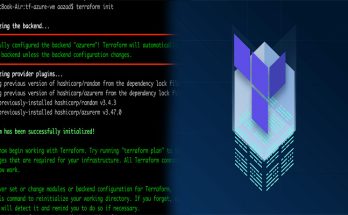Cloud computing is the delivery of on-demand internet services, such as web applications and software, over a network. Cloud computing is one of the most talked about topics in technology today. It’s also one of the most misunderstood technologies out there—many people have heard of it but don’t really know what it is or how it works. Cloud computing can be a complex topic to understand, but we’re here to break down some common cloud computing architectures that will help you better understand how this technology works and what it means for your business or project.
Software-as-a-Service (SaaS)
Software-as-a-Service (SaaS) is a model in which the software providers host the application and provide it to the user over the internet. It is a subscription-based service that allows users to access their applications from any device and adds additional features such as analytics, data management and security features.
The SaaS architecture requires less upfront investment compared to other models because it does not require setting up servers or maintaining them after deployment. However, this comes with its own set of challenges: there’s no way for you to control what happens on those servers so if something goes wrong with them–or if your provider goes out of business–your data could be lost forever!
Platform-as-a-Service (PaaS)
Platform-as-a-Service (PaaS) is a type of cloud computing where the application programming interface (API) is provided to the user. With PaaS, you can build, deploy and manage applications on top of an operating system and application software.
You will find that there are many different types of PaaS available in the market today like Google App Engine or Heroku which provide easy access to services like databases, storage etc., without having to worry about setting up your own infrastructure.
Infrastructure-as-a-Service (IaaS)
- IaaS is a cloud computing service model in which the cloud provider delivers virtualized computing resources, including storage and network to the consumer.
- In IaaS, consumers can dynamically provision resources that are self-service from a catalog of available services. The consumer does not manage or control specific physical assets or virtual machines (VMs). Instead they manage their own software stack on top of these resources provided by the provider.
Cloud computing architectures can be divided into 3 categories
Cloud computing architectures can be divided into three categories: Software as a Service (SaaS), Platform as a Service (PaaS) and Infrastructure as a Service (IaaS). The most common type of cloud architecture is SaaS, which allows users to access applications through the internet. For example, Salesforce is an example of an SaaS application. Another common type of cloud architecture is PaaS; this allows developers to build and run applications on third-party platforms without having to manage any hardware or software themselves. An example of PaaS includes Heroku or Google App Engine – both allow developers to deploy web apps quickly and easily without needing much technical knowledge about servers or operating systems. Finally there is IaaS; this gives you control over your own servers so you can install whatever software or hardware you want on them but does come at some cost since it requires more maintenance than other types of clouds
Cloud computing architectures can be divided into 3 categories: Software-as-a-Service (SaaS), Platform-as-a-Service (PaaS) and Infrastructure-as-a-Service (IaaS). Each one has its own purpose and benefits, but some cloud providers offer all three options.





